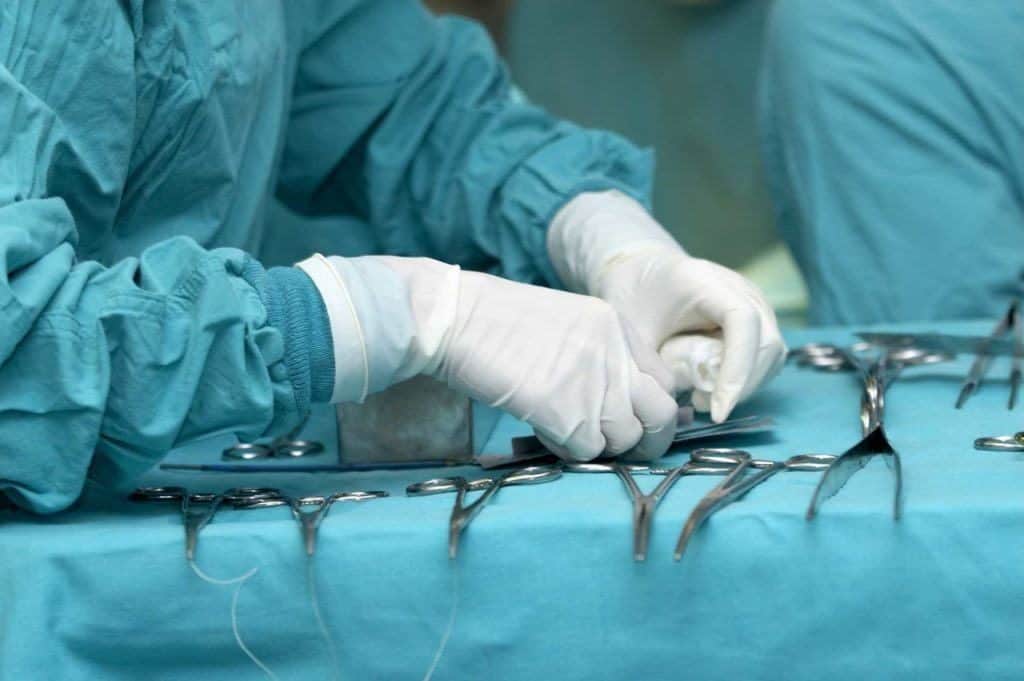Contents:
- Medical Video: Cervical Cancer Treatments
- Treatment of cervical cancer is based on the stage
- Treatment of cervical cancer through surgery
- What are the side effects or risks of cervical cancer surgery?
- Radiotherapy treatment
- What are the side effects or risks of cervical cancer radiotherapy?
- Chemotherapy treatment
- What are the side effects or risks of cervical cancer chemotherapy?
- How to prevent cervical cancer?
- 1. Carry out the HPV vaccine
- 2. Pap smear test
Medical Video: Cervical Cancer Treatments
Cervical cancer is the number four cancer that affects the most women in the world, based on data WHO. This cancer can be cured if detected early, but the choice of treatment for cervical cancer depends on the stage and extent of the cancer has spread.
Treatment of cervical cancer is based on the stage
Treatment for cervical cancer is generally complex. Therefore, hospitals will usually form a team of professionals who are experts in treating early stage cervical cancer and advanced cervical cancer.
Cervical cancer sometimes does not cause symptoms so often the patient comes to the doctor and is diagnosed when the cancer has advanced stage. In general, there are three main choices for the treatment of cervical cancer: surgery, radiotherapy, and chemotherapy. Here's a complete discussion that you should look carefully at.
Treatment of cervical cancer through surgery
There are 3 types of surgery to treat cervical cancer:
- Radical tracelectomy: Where the cervix along with surrounding tissue and the upper part of the vagina are removed, but the uterus is left.
- Hysterectomy: This method will remove the cervix and uterus, depending on the stage of the cancer, it may also be important to remove the ovary and fallopian tubes.
- Exenteration of the pelvis: Where major surgeries on the cervix, vagina, uterus, bladder, ovary, fallopian tubes and rectum are removed entirely
What are the side effects or risks of cervical cancer surgery?
Radical Tracelectomy has side effects such as wounds or infections of the intestine. But after undergoing this type of surgery, some women can still get pregnant. And basically pregnancy can occur and it is permitted by the doctor when your cervical cancer is completely healed, even though later you are at risk of miscarriage.
Hysterectomy can cause infertility (inability to have children) for women who live it. Other risks that can accompany hysterectomy surgery usually include excessive bleeding and damage to the urinary or intestinal tract system.
Exenteration of the pelvis is a major surgery that is usually only performed when cervical cancer has recurred after a series of previous treatments that are believed to be successful. Side effects and risks that can be felt vary by person. Generally you will feel nauseous, vomit and become easily tired after doing this operation.
Radiotherapy treatment
In certain stages of cervical cancer, you will be treated with radiotherapy alone or in combination with surgery. In this treatment, your body will be exposed to radiation. Radiation sources can be obtained from outside, where there are machines that emit radiation to you, or internally.
In this internal method, an implant will be implanted in your body to emit radiation. There are cases where both methods will be combined. The radiotherapy program usually lasts for five to eight weeks.
What are the side effects or risks of cervical cancer radiotherapy?
There are 2 side effects of this type of cervical cancer treatment. For the short term, you may feel fatigue, vomiting or diarrhea, and other digestive problems such as constipation. As for the long-term effects of radiotherapy treatment can cause scar tissue to form inside the vagina.
The scarring that appears, can make the vagina narrower (called vaginal stenosis), less able to stretch, or even shorter in size, which can make penetration of vaginal sex painful
Chemotherapy treatment
Chemotherapy can be used independently or in combination with radiotherapy. In advanced cancer, this method is often used to prevent cancer from developing. The purpose of this treatment is to destroy cancer cells while producing the smallest possible damage to healthy cells. Chemotherapy can also be considered a way to shrink cervical cancer and reduce tumor growth.
What are the side effects or risks of cervical cancer chemotherapy?
Chemotherapy has side effects that can be seen from changes in yourself, which become easily tired, feel nausea, vomiting and hair loss occurs. The effect of chemotherapy can temporarily reduce the number of normal cells in your blood.
During chemotherapy, your blood will be tested regularly and given antibiotics to treat and prevent any infection. Blood transfusions can be given if you have anemia. Then, some chemotherapy drugs commonly used to treat cervical cancer can affect the kidneys. Usually this will not cause any symptoms, but the effects can be severe and the kidneys can be permanently damaged, unless treatment is stopped.
How to prevent cervical cancer?
The American Cancer Society encourages women to take precautions as early as possible, by:
1. Carry out the HPV vaccine
HPV is a virus that causes sexually transmitted infections, which can cause cervical cancer in some women. However, this virus can also be spread by contact from skin to skin. Why HPV vaccine important to do? Experts say that the younger a person gets this vaccine, the higher the effectiveness of the vaccine will be.
Girls are also advised to get this vaccine from the age of 9 years. Besides protecting yourself from strain HPV virus that causes genital wart disease, women can also reduce the risk of transmission strain HPV virus causes cervical cancer in future sexual partners.
2. Pap smear test
PAP smear is a test that can check the condition of cells in the cervix (cervix) and vagina. With routine checks, changes in cells that may develop into cancer or have become cancer can be detected. When doing PAP smear, the doctor can also combine it with the test human papillomavirus (HPV), especially for women aged 30 years and over.












